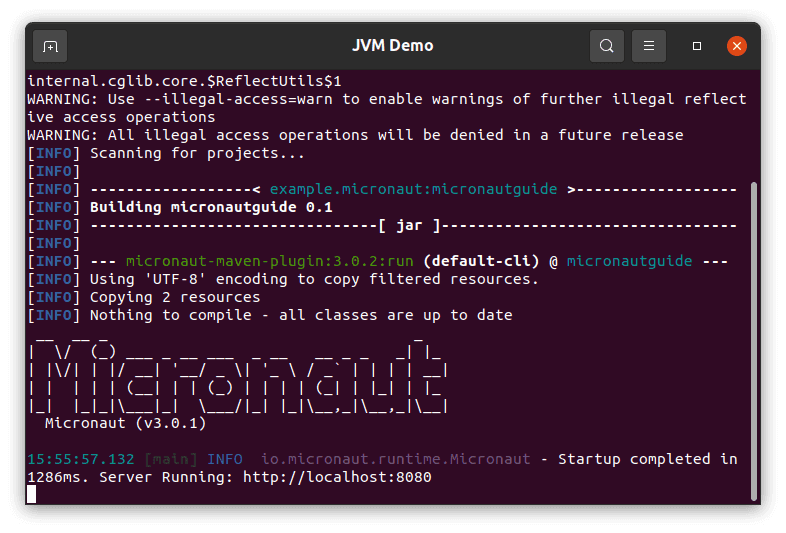Building micronaut microservices using microstartercli
Introduction
In the rapidly evolving tech landscape, microservices have emerged as a game changer, offering developers the flexibility and scalability they crave. Among the myriad of tools available, Micronaut stands out for its lightweight framework specifically designed for building microservices and serverless applications. But how do you efficiently kickstart a Micronaut project? Enter MicrostarterCLI, a powerful tool that simplifies the process of building Micronaut microservices. In this blog post, we’ll explore how you can easily leverage MicrostarterCLI to streamline your microservice development with Micronaut.
Whether you’re a seasoned developer or a tech enthusiast eager to explore new frameworks, building Micronaut microservices using MicrostarterCLI can transform your approach to software development. This guide will walk you through the essentials, offering practical insights and tips along the way, all tailored to meet the needs of developers and microservices practitioners.
By the end of this post, you’ll understand how to set up a Micronaut project with MicrostarterCLI, explore its features, and begin creating robust microservices. Let’s dive in and discover how this combination empowers your development process!
Building Micronaut Microservices Using MicrostarterCLI
Building Micronaut microservices using MicrostarterCLI is a straightforward process that can significantly enhance your development workflow. MicrostarterCLI provides a seamless method for generating Micronaut applications quickly, allowing you to focus on writing efficient code rather than setting up your environment. With its intuitive command-line interface, you can create microservices that are lightweight and optimized for modern cloud environments.
The key to building Micronaut microservices using MicrostarterCLI lies in its ability to generate boilerplate code for you, setting up a solid foundation for your project. This not only saves time but also ensures that you start with a well-structured application. Whether you’re developing a new service or optimizing an existing one, MicrostarterCLI offers the tools to deliver high-quality microservices efficiently.
Another advantage of building Micronaut microservices using MicrostarterCLI is the community support and documentation available. With access to a wide range of resources, developers can quickly resolve issues and stay updated with the latest trends and features in Micronaut development. Exploring these resources will help you stay competitive and innovative in the fast-paced tech industry.
Why Choose Micronaut for Microservices?
Micronaut is designed to address some of the common challenges faced by developers working with microservices. It offers quick startup times, low memory consumption, and a developer-friendly environment, making it an ideal choice for microservices architectures. Building Micronaut microservices using MicrostarterCLI further enhances these benefits by streamlining the initial setup and configuration process.
One of the standout features of Micronaut is its support for reactive programming. This allows your microservices to handle concurrent requests efficiently, providing better performance and scalability. When building Micronaut microservices using MicrostarterCLI, you can easily incorporate reactive features into your applications, ensuring they are responsive and robust.
Additionally, Micronaut’s built-in dependency injection and AOP (Aspect-Oriented Programming) capabilities simplify application management. By automating common patterns, Micronaut reduces boilerplate code and enhances code readability, making the development process more enjoyable and productive. Integrating these features while building Micronaut microservices using MicrostarterCLI ensures a seamless and powerful development experience.

Getting Started with MicrostarterCLI
Before you can start building Micronaut microservices using MicrostarterCLI, you’ll need to set up your development environment. The first step is to install MicrostarterCLI, which is a straightforward process. Once installed, you can use it to generate new Micronaut projects with simple commands, setting the stage for efficient microservice development.
To begin building Micronaut microservices using MicrostarterCLI, open your terminal and run the appropriate commands to create a new project. MicrostarterCLI will prompt you to specify the project details, such as the base package name and supported features. This input will guide the generation of a tailored Micronaut project that aligns with your requirements.
Once your project is ready, you can explore the generated structure and begin coding. MicrostarterCLI provides a well-organized folder hierarchy, making it easy to locate and manage different components of your application. By following these steps, you’ll be well on your way to mastering the art of building Micronaut microservices using MicrostarterCLI.
Exploring MicrostarterCLI Features
MicrostarterCLI is packed with features designed to enhance the development experience when building Micronaut microservices. One notable feature is its support for multiple build tools, such as Gradle and Maven. This flexibility allows you to choose the build system that best fits your project’s needs, ensuring compatibility and ease of use.
Another powerful feature of MicrostarterCLI is its ability to generate tests alongside your service code. This promotes test-driven development, ensuring your microservices are reliable and maintainable from the outset. By building Micronaut microservices using MicrostarterCLI, you can confidently integrate and deploy your applications, knowing they are thoroughly tested.
Customization is also a significant aspect of MicrostarterCLI. The tool allows you to enable or disable certain features during project creation, tailoring the generated code to your specific requirements. This level of customization is invaluable for developers looking to optimize their microservices for performance and scalability.
Harnessing Micronaut’s Dependency Injection
Dependency injection is a core concept in Micronaut, enabling developers to write modular and testable code. When building Micronaut microservices using MicrostarterCLI, you can take full advantage of this feature to manage your application’s dependencies efficiently. By leveraging Micronaut’s dependency injection, you reduce boilerplate code, improve code readability, and enhance application modularity.
Micronaut’s dependency injection is annotation-based, making it easy to implement and manage within your microservices. This approach also simplifies testing, as you can easily mock dependencies when writing unit tests. Building Micronaut microservices using MicrostarterCLI ensures that your project is set up with best practices in mind, promoting clean, maintainable code.
Additionally, Micronaut offers a range of built-in annotations for common tasks, further streamlining the development process. Whether you’re injecting configuration properties or creating custom beans, Micronaut’s dependency injection framework has you covered. By incorporating these features, you’ll create microservices that are not only efficient but also easy to extend and maintain.
Building Reactive Microservices with Micronaut
Reactive programming is a critical component of modern microservice architectures, and Micronaut excels in this area. Building Micronaut microservices using MicrostarterCLI allows you to integrate reactive features seamlessly, ensuring your services are responsive and capable of handling high loads efficiently. This approach is particularly beneficial for applications that require real-time data processing and high concurrency.
Micronaut’s support for reactive programming includes native integration with libraries like RxJava and Reactor, providing developers with a range of options for implementing reactive paradigms. When building Micronaut microservices using MicrostarterCLI, you can easily incorporate these libraries and leverage their full potential to build scalable and performant applications.
The benefits of reactive microservices extend beyond performance. They also promote a non-blocking architecture, which can lead to more efficient resource utilization and improved application responsiveness. By adopting reactive programming principles, you’ll ensure that your microservices are ready to meet the demands of today’s fast-paced, data-driven world.
Interacting with Databases in Micronaut
Database interaction is a fundamental aspect of most applications, and Micronaut provides robust support for various database technologies. When building Micronaut microservices using MicrostarterCLI, you can easily integrate popular databases like PostgreSQL, MySQL, and MongoDB. Micronaut’s streamlined data access layer simplifies database operations, allowing you to focus on business logic rather than low-level data management.
Micronaut supports both JDBC and NoSQL databases, providing flexibility in how you store and retrieve data. Its seamless integration with Hibernate and JPA further enhances its database capabilities, allowing you to leverage ORM features for complex data relationships. Building Micronaut microservices using MicrostarterCLI ensures that your database interactions are efficient and scalable, regardless of the underlying technology.
Additionally, Micronaut’s support for reactive databases like R2DBC and MongoDB Reactive Streams extends its capabilities to reactive programming, enabling non-blocking data access and improved performance. By incorporating these features into your microservices, you’ll create applications that are both powerful and responsive.
Securing Your Micronaut Microservices
Security is a paramount concern in any application, and Micronaut provides comprehensive features to safeguard your microservices. Building Micronaut microservices using MicrostarterCLI allows you to implement security best practices from the start, ensuring your applications are protected against common threats. Micronaut’s security framework supports authentication, authorization, and encryption, offering a complete solution for securing your services.
Micronaut’s security features are highly customizable, allowing you to define security rules that match your application’s requirements. Whether you’re implementing JWT authentication or role-based access control, Micronaut provides the tools needed to secure your microservices effectively. Building Micronaut microservices using MicrostarterCLI ensures that your project is set up with a robust security foundation, helping you protect sensitive data and maintain user trust.
Furthermore, Micronaut’s support for OAuth2 and OpenID Connect enables seamless integration with third-party identity providers, making it easy to implement single sign-on and federated identity management. By incorporating these security features, you’ll create microservices that are not only functional but also secure and reliable.

Monitoring and Observability in Micronaut
Monitoring and observability are essential components of a successful microservices architecture, providing insights into application performance and health. Building Micronaut microservices using MicrostarterCLI ensures that your services are equipped with the necessary tools for effective monitoring. Micronaut’s built-in support for metrics and tracing allows you to track critical performance indicators and identify bottlenecks in your system.
Micronaut integrates seamlessly with popular monitoring solutions like Prometheus, Grafana, and Zipkin, providing a comprehensive observability stack. By leveraging these tools, you can visualize application metrics, set up alerts, and trace request flows across your microservices. Building Micronaut microservices using MicrostarterCLI ensures that your project is configured to capture and analyze performance data, enabling proactive maintenance and optimization.
In addition to monitoring, Micronaut’s support for distributed tracing provides valuable insights into how requests propagate through your microservices architecture. By incorporating these observability features, you’ll ensure that your applications are both performant and reliable, ready to meet the demands of your users.
Continuous Integration and Deployment with Micronaut
Continuous integration and deployment (CI/CD) are vital practices for maintaining agility and quality in software development. Building Micronaut microservices using MicrostarterCLI allows you to implement CI/CD pipelines that automate testing and deployment, ensuring rapid delivery of new features and bug fixes. Micronaut’s compatibility with popular CI/CD tools like Jenkins, GitLab CI, and GitHub Actions simplifies pipeline creation and management.
When building Micronaut microservices using MicrostarterCLI, you can leverage containerization technologies like Docker to create reproducible environments for testing and deployment. This approach ensures consistency across development, testing, and production environments, reducing the risk of deployment errors. By incorporating CI/CD practices, you’ll streamline your development process and enhance collaboration within your team.
Additionally, Micronaut’s support for Kubernetes and other container orchestration platforms enables scalable, automated deployments to cloud environments. By adopting these deployment strategies, you’ll ensure that your microservices are resilient and capable of handling increased demand as your application grows.
Conclusion
Building Micronaut microservices using MicrostarterCLI is a powerful approach for developers looking to create scalable, efficient, and reliable applications. By leveraging Micronaut’s features and integrating with complementary tools, you can streamline your development process and deliver high-quality microservices that meet the demands of today’s digital landscape.
Whether you’re just starting your microservices journey or looking to optimize your existing architecture, building Micronaut microservices using MicrostarterCLI provides the foundation for success. With robust support for reactive programming, database integration, security, and observability, Micronaut empowers developers to create applications that are both innovative and resilient.
To continue exploring the possibilities of Micronaut and MicrostarterCLI, consider joining online communities and forums where developers share their experiences and insights. By staying engaged and informed, you’ll be well-equipped to harness the full potential of building Micronaut microservices using MicrostarterCLI. Happy coding!














Post Comment